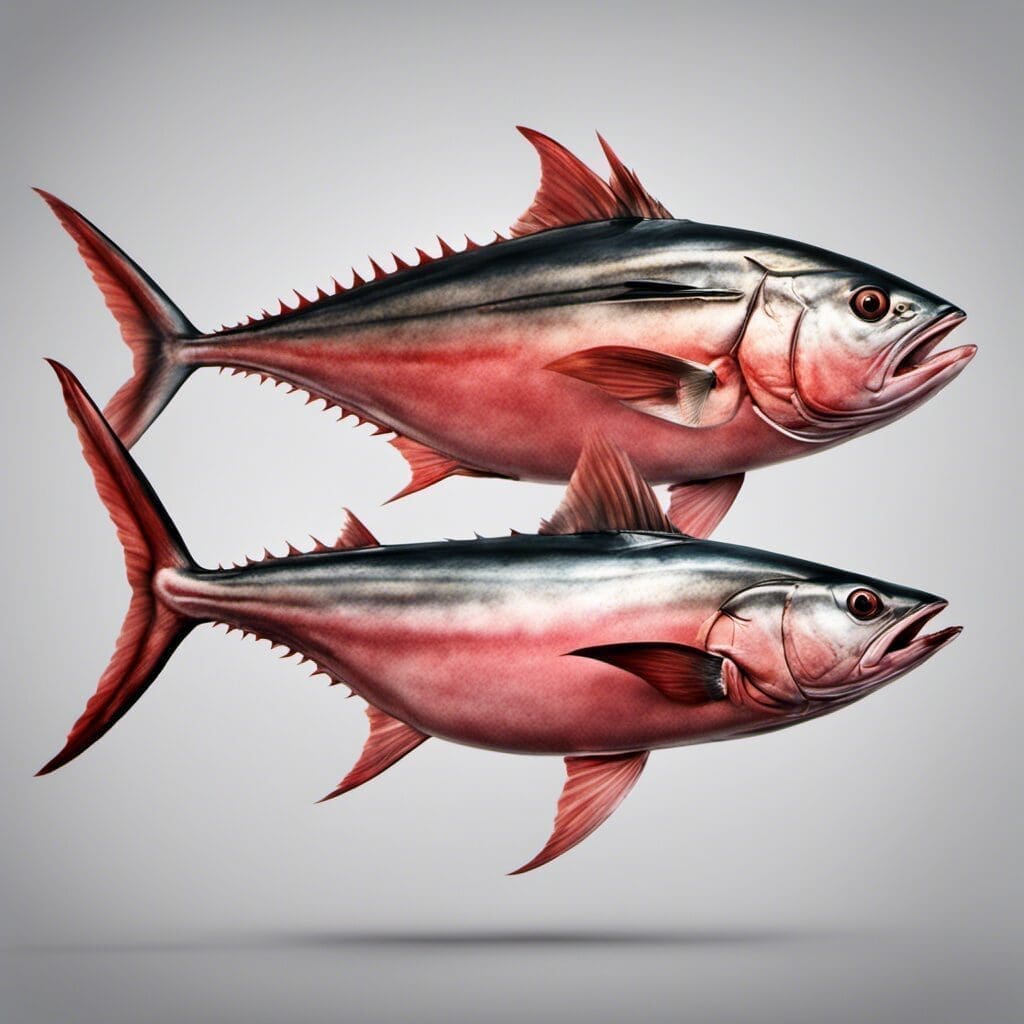Introduction
The Bigeye Tuna (Thunnus obesus) is a species of tuna in the Scombridae family. It is known for its large eyes and its capability to dive deeper than any other tuna species.
Conservation Status
The International Union for Conservation of Nature has classified Bigeye Tuna as a vulnerable species. The primary threats to its population include overfishing and commercial exploitation due to its high-quality meat.
Current Status
As of 2022, Bigeye Tuna are listed as Vulnerable.
Conservation Efforts
Conservation actions have been put in place at the national and international levels. Regulations such as size limits, bag limits, and restrictions on fishing gear types have been implemented. Regional fisheries management organizations also oversee conservation programs.
Statistics
| Aspect | Average | Range |
|---|---|---|
| Length | 200 cm | 180 – 250 cm |
| Weight | 70 kg | 40 – 210 kg |
| Average Lifespan | 11 years | – |
Distribution
Bigeye Tuna are found in the open waters of the tropical and subtropical oceans worldwide.
Regions/Countries
Major fisheries for Bigeye Tuna are in the western and central Pacific Ocean; northeastern Atlantic Ocean; Gulf of Guinea; Indian Ocean; and the Caribbean Sea.
Migration Patterns
Bigeye Tuna are known to undertake trans-oceanic migrations, mainly related to changes in water temperature and food availability.
Habitats
Bigeye Tuna enjoy warm surface waters, but they can also dive to depths where the water is much colder.
Water Type
Bigeye Tuna inhabit saltwater.
Depth Range
They are found from the surface to depths of 500 meters.
Temperature Range
They prefer warm surface waters above 20°C, but can tolerate temperatures as low as 5°C at depth.
When and Where to See
Bigeye Tuna can be seen year-round in tropical and subtropical regions.
Seasonal Patterns
Their movements are influenced by the seasonal variations in sea surface temperature and food availability.
Time of Day
They are primarily nocturnal feeders, so night-time is the best chance for spotting.
Best Fishing Locations
The best locations for fishing Bigeye Tuna include the Pacific Islands, western and central Pacific Ocean, northeastern Atlantic Ocean, Gulf of Guinea, Indian Ocean, and the Caribbean Sea.
Top 10 Fishing Spots
- Kona, Hawaii
- Cabo San Lucas, Mexico
- Florida Keys, USA
- Baja Peninsula, Mexico
- Madeira, Portugal
- Canary Islands, Spain
- Mauritius, Indian Ocean
- Seychelles, Indian Ocean
- Micronesia, Pacific Ocean
- Guam, Pacific Ocean
General Tips
Fishing for Bigeye Tuna demands patience and persistence. The best fishing times are early morning and late afternoon. The use of sonar can help identify spots where schools of Bigeye Tuna are likely to be found.
How to Catch
Preferred Bait or Lures
Live bait, such as mackerel and squid, and artificial lures are effective for Bigeye Tuna fishing.
Fishing Techniques
Trolling with either lures or live bait is among the most effective techniques.
Best Time of Day or Season for Fishing
The summer and autumn months are the best times to catch Bigeye Tuna, especially during the early morning and late afternoon.
Identification Guide
Bigeye Tuna are easily identifiable by their robust bodies, metallic blue tops, and silver-white bottoms. Their pectoral fins are quite long, extending beyond the second dorsal fin. They also have large eyes, setting them apart from other tuna species.
Culinary
How to Cook
It is a versatile fish that can be prepared in several ways, including grilling, baking, and pan-searing.
Taste Profile
The meat is light, firm, and features a mild, slightly sweet flavor.
Nutritional Information
Bigeye Tuna is a great source of protein, vitamin B, and Omega-3 fatty acids.
Additional Information
Behavior
Bigeye Tuna are known to undergo trans-oceanic migrations related to changes in water temperature and food availability.
Predators and Threats
Natural predators include larger fish, sharks, and sea birds. Overfishing and commercial exploitation are significant human-induced threats.
Cultural/ Historical Significance
Historically, Bigeye Tuna has been a significant source of food for many island and coastal communities.
References and Further Reading
For further reading, please refer to:

